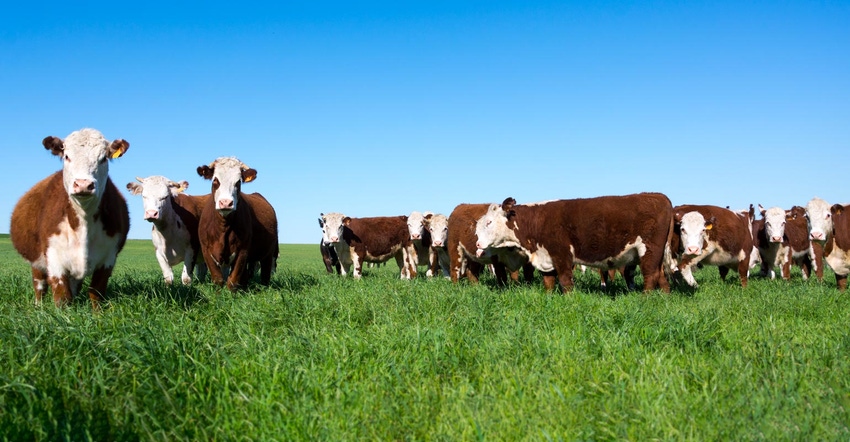September 14, 2020

While 2020 has certainly been a challenging year for agriculture and especially those in the livestock business, direct-to-consumer meat sales have been a bright spot as a result of increased demand.
Although a small percentage in the grand scheme of things, direct marketing of farm products has become a more popular route of merchandising livestock. For those with an established direct-to-consumer meat sales business, COVID-19 and the resulting reduction in national packing capacity, and limited meat supplies in the retail case, have created the perfect storm for expansion of niche market opportunities.
The increased demand and volume of local beef, pork and other meats has also led to record throughput and demand for services at the small meat processors across the country. As I visit with the local meat processors across Ohio, many of them are taking harvest reservations well into mid-2021, and several processors have already set some beef appointments into 2022.
Follow the rules
As new producers venture into direct marketing, there are some things to keep in mind, particularly when it comes to food safety and the regulations that pertain to selling meat.
While some regulations may vary from state to state, generally, for meat to be sold, it must come from an animal that was harvested in an inspected meat processing facility. A meat processor in Ohio will either fall under federal inspection by USDA or state inspection by the Ohio Department of Agriculture. The biggest difference between the two inspection agencies is that USDA-inspected products can enter interstate commerce.
In Ohio, there are also custom-exempt meat processing plants. Custom-exempt plants process meat for the producer’s own use; the meat cannot be resold. These products will be labeled “Not for sale.”
When it comes to the storage and distribution of meat products, additional licenses may be required to ensure safe handling practices. For more information on Ohio license requirements, see Selling food from the farm: When do you need a license? Or, visit farmoffice.osu.edu and click on “Agricultural Law Library” and then “Food Law.”
Understand product pricing
Regardless of how much you charge for a carcass or a cut of meat you must know two things: your breakeven price and how much money (profit) you want to make.
To determine a breakeven price, you must know your cost of production. Don’t undersell the value of practices that make your product unique. Keep in mind that most locally processed beef is not graded; be careful in how you advertise the quality of your product. Ungraded beef should not be promoted as Choice, Prime, or “Certified Angus Beef.”
Cost of production
Here are points to consider when figuring your cost of production:
• Cost of animal. If the animal was purchased, what did it cost? If home-raised, what did it cost to keep a cow for a year?
Now add in these costs:
• Feed. Value or cost of feedstuffs and mineral that were either produced or purchased
• Veterinary. Any vaccinations, dewormer, other medications, veterinary bills
• Housing. Bedding and suplies
• Transport. Fuel, wear and tear on truck and trailer
• Advertising. The cost of acquiring a customer
• Time. The value of time invested, on average, per head
Once you have calculated a breakeven cost, add your desired profit per head and divide that total by the hanging carcass weight to determine a price per pound.
Profit margin can be a flat rate per head, or a percentage of the cost of production. Determine a margin that suits your enterprise and your customer.
Often, the customer will want an idea of how much meat they will be paying for. Carcass weight can be estimated prior to harvest by estimating the dressing percentage. The dressing percentage is the carcass weight divided by the live weight times 100.
Grain fed, nondairy-type steers and heifers will dress around 62%. The figure is closer to 59% for a dairy steer. Dressing percentage can vary depending on gut fill, muscling, fatness and cleanliness of the hide.
To determine prices for individual retail beef cuts, the formula to calculate cost of production is similar; however, the cost of harvesting, processing, packaging and labeling the product must be accounted for. Time spent marketing and advertising can be considerably higher when marketing individual cuts.
When calculating the average price per pound of individual cuts, one must consider cutting yield, which is the pounds of retail product divided by the carcass weight times 100. Cutting yield will be influenced by boneless vs. bone-in product, muscling, amount of fat needed to be trimmed, and amount of fat in ground beef.
Direct marketing of beef to the local consumer can be a way to add value to a fed cattle enterprise — when done correctly. Continue to work with and develop a relationship with your local meat processor as we move into the coming year. Produce a beef product that has a high-quality eating experience, and you will be sure to have return customers.
Ruff is the OSU Extension beef field specialist. He is also a member of the OSU Extension Beef Team, which publishes the weekly Ohio BEEF Cattle letter at beef.osu.edu.
Source: OSU Extension, which is solely responsible for the information provided and is wholly owned by the source. Informa Business Media and all its subsidiaries are not responsible for any of the content contained in this information asset.
You May Also Like




